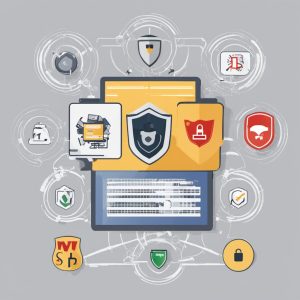
Email is one of the main targets for cybercriminals, as it often contains personal and confidential information. In particular, phishing attacks, password cracking, and malware can cause significant damage not only to individual users but also to businesses. To protect your email from potential threats, you should take comprehensive measures. In this article, we’ll look at practical tips and tools to help make your email more secure.
Two-factor authentication (2FA)
2FA adds an extra layer of security to your account. After entering your password, you must also verify your identity using a second method – a code sent to your phone or generated by the app. This feature makes it much more difficult for attackers to do their job, even if your password has been compromised.
Tools to use: Google Authenticator, Authy, Microsoft Authenticator. All of these applications not only generate one-time codes, but also provide additional functions, such as data backup.
Create complex and unique passwords
Your password is the first line of defense for your mailbox. Using simple or repetitive passwords is the main cause of hacking. Passwords that consist of a large number of characters, letters of different case, numbers, and special characters make them much harder to crack.
Recommended tools: LastPass, 1Password, Bitwarden. These password managers will help you create unique, complex passwords and store them securely, so you don’t have to memorize anything.
Change passwords regularly
Even if your password is quite complex, it’s important to change it regularly, especially if you use email for important or confidential correspondence. Frequent updates will reduce the risk of hacking in the event of a potential compromise.
Tip. Set a reminder to change your password at least once every few months. Additionally, check to see if your password has been compromised by using sites like Have I Been Pwned.
Beware of phishing emails
Phishing is a very common method of data theft in which attackers masquerade as trustworthy organizations or individuals. Such emails may contain links to fake websites or malware attachments.
What to do? Always check the sender and do not click on suspicious links. If an email looks suspicious, even if it is known at first glance, it is still best to check it with anti-virus software.
Email encryption
Encryption ensures that only you and your recipient can read the message, so your emails are protected even if they are intercepted. Services to use: ProtonMail is one of the most popular secure email services that has built-in encryption. You can also consider Tutanota with similar features. For traditional email clients like Gmail or Outlook, you can use the PGP (Pretty Good Privacy) extension for additional encryption.
Software updates
Updating your operating system, browser, and email client is an important step to protect against known vulnerabilities. Cybercriminals often use old versions of programs where vulnerabilities have already been found and fixed.
Tip. Enable automatic updates for your software to ensure that you are protected against the latest threats.
Privacy settings
Check your email client’s privacy settings. Enable features that help protect against spam and phishing emails, and control access to third-party applications on your account.
Use a VPN for a secure connection
A VPN hides your IP address and encrypts data transmitted over the Internet, which is most important when you use public Wi-Fi networks where the risk of data interception is higher. Popular VPN services: NordVPN, ExpressVPN, CyberGhost. All of them have a fairly high level of encryption and protection. By the way, we have an interesting article on VPNs on TechnoVision, so you can learn more about them.
Disposable email addresses
Use temporary email addresses to register on websites you don’t fully trust. This way, you can avoid receiving spam to your primary email address and maintain your privacy. Useful services: 10MinuteMail, Guerrilla Mail, TempMail. They allow you to create one-time addresses that are automatically deleted after a certain time.
Anti-virus software
They protect your computer from malicious files and programs that may be sent via email. Modern antiviruses offer real-time protection and automatic scanning of incoming emails. P.S We also have a more detailed article on antiviruses on our website, which we recommend reading. Email security is a process that, as we said earlier, requires a comprehensive approach. That’s why using two-factor authentication, encryption, and all the other tools listed above will help protect your personal and business data. By following the recommendations, you can significantly increase the level of protection of your mailbox.

